The world of SEO is ever-evolving, with search engines continuously updating their algorithms to deliver better user experiences. As we move into 2024, it’s crucial to understand how SEO practices have shifted from the past. The old tactics that once worked are no longer effective, and embracing modern strategies is essential to staying competitive in the digital space. This blog post explores the key differences between old SEO practices and the best practices for 2024 SEO.

1. Content: Quality Over Quantity
- Old SEO: Content was often low quality, focusing on gaming the system to rank higher in search results. Quantity over quality was the norm, with little regard for user experience or relevance.
- 2024 SEO: High-quality content is king. It addresses both search intent and user needs, providing valuable information that resonates with the audience. The focus is on creating content that is engaging, informative, and tailored to the target audience.
2. Backlinks: Relevance and Authority
- Old SEO: The strategy was to acquire as many backlinks as possible, often using black hat tactics. Quantity was prioritized over quality, with little consideration for the relevance or authority of the linking sites.
- 2024 SEO: Building relevant and authoritative backlinks is essential. White hat tactics are used to earn links from reputable sites, emphasizing the importance of quality over quantity. These links should enhance the credibility and authority of the content.
3. User Experience (UX): More Than Just a Website
- Old SEO: As long as a business had a website, it was considered sufficient. Little attention was paid to the design, usability, or performance of the site.
- 2024 SEO: User experience is paramount. Websites must have fast load speeds, be mobile-friendly, and feature modern designs that are easy to navigate. A seamless and intuitive user experience is critical to retaining visitors and improving search rankings.
4. Conversion Rate Optimization (CRO): Adding Value
- Old SEO: Spammy pop-ups and aggressive calls to action were commonly used to drive clicks, often at the expense of user experience.
- 2024 SEO: The focus is on value-adding offers that align with the content and Ideal Customer Profile (ICP). CRO strategies aim to enhance user engagement and conversion by offering real value rather than relying on intrusive tactics.
5. Keywords: Strategic Use
- Old SEO: Keyword stuffing was a prevalent practice, with marketers cramming as many keywords as possible into their content to manipulate rankings.
- 2024 SEO: Keywords are used strategically, with a focus on one primary keyword and several secondary keywords. The emphasis is on creating content that naturally incorporates keywords to improve relevance and readability.
6. Content Upgrades: Continuous Improvement
- Old SEO: Once content was created, it was rarely updated or improved. The goal was to produce more content rather than refining existing assets.
- 2024 SEO: Regular content analysis and upgrades are essential to maintaining relevance and improving rankings. Quarterly reviews help identify areas for improvement, ensuring content remains fresh and aligned with user needs.
7. Technical SEO: Comprehensive Optimization
- Old SEO: Technical SEO efforts were minimal, often just enough to get the site indexed by search engines.
- 2024 SEO: Full technical optimization is crucial for enhancing user experience and search visibility. This includes optimizing site speed, mobile responsiveness, schema markup, and more to ensure a smooth user experience.
8. Artificial Intelligence (AI): A Supportive Role
- Old SEO: AI tools were often misused to produce large volumes of low-quality content, aiming to exploit search algorithms.
- 2024 SEO: AI is used to complement and enhance the SEO process, not to replace it. It assists in data analysis, content creation, and personalization, helping marketers make informed decisions and improve efficiency.
In conclusion, the evolution from old SEO to 2024 SEO reflects a shift towards user-centric strategies that prioritize quality, relevance, and engagement. By embracing these modern practices, marketers can ensure their SEO efforts are effective and aligned with the ever-changing digital landscape.




